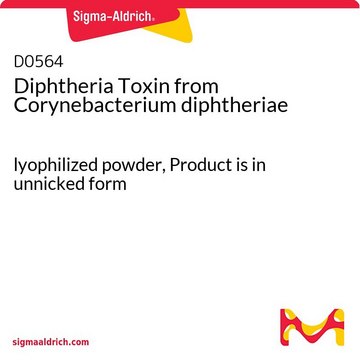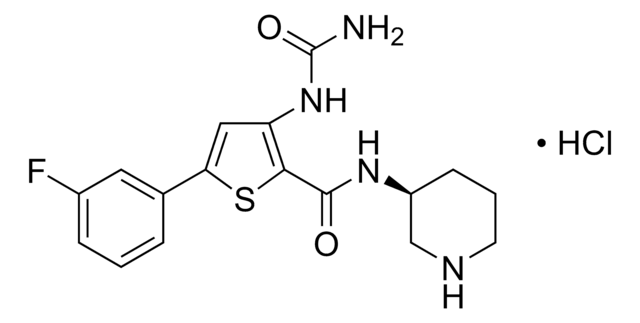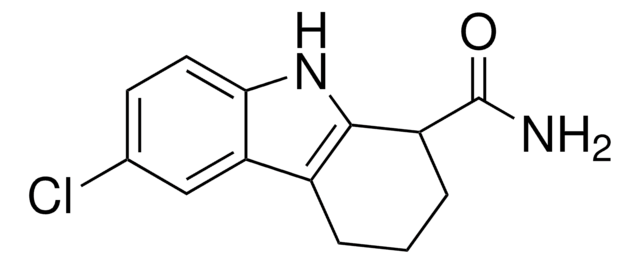322326
Diphtheria Toxin, Unnicked
from Corynebacterium diphtheriae, Major band under reduced conditions (SDS-PAGE), <15% nicking, solid, protein synthesis inhibitor, Calbiochem®
Sinônimo(s):
DTx
About This Item
Produtos recomendados
Nome do produto
Diphtheria Toxin, Unnicked, Corynebacterium diphtheriae, Diphtheria toxin catalyzes ADP-ribosylation of eukaryotic aminoacyltransferase II (EF2) using NAD as substrate. Activation requires nicking with a protease followed by reduction with DTT.
Nível de qualidade
descrição
RTECS - XW5807200
Formulário
solid
fabricante/nome comercial
Calbiochem®
condição de armazenamento
OK to freeze
Condições de expedição
ambient
temperatura de armazenamento
2-8°C
Descrição geral
Aplicação
Ações bioquímicas/fisiológicas
Eukaryotic aminoacyltransferase II (EF2)
Advertência
forma física
Reconstituição
Nota de análise
Outras notas
Informações legais
Palavra indicadora
Danger
Frases de perigo
Declarações de precaução
Classificações de perigo
Acute Tox. 1 Inhalation - Acute Tox. 1 Oral
Código de classe de armazenamento
6.1A - Combustible acute toxic Cat. 1 and 2 / very toxic hazardous materials
Classe de risco de água (WGK)
WGK 3
Ponto de fulgor (°F)
Not applicable
Ponto de fulgor (°C)
Not applicable
Certificados de análise (COA)
Busque Certificados de análise (COA) digitando o Número do Lote do produto. Os números de lote e remessa podem ser encontrados no rótulo de um produto após a palavra “Lot” ou “Batch”.
Já possui este produto?
Encontre a documentação dos produtos que você adquiriu recentemente na biblioteca de documentos.
Nossa equipe de cientistas tem experiência em todas as áreas de pesquisa, incluindo Life Sciences, ciência de materiais, síntese química, cromatografia, química analítica e muitas outras.
Entre em contato com a assistência técnica









